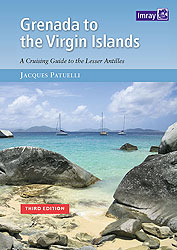
Destinations
Map of Lesser Antilles
Everything about
archipelago
Sailing in the Lesser
Antilles(charts with
routes and wp)
Services directory
(Blue pages)
Order the guide
Mail
Last informations
Warning

Grenadines

Grenadines
(St Vincent)
|
Grenadines
(Grenada) |
|
|
The history of these islands is intimately
tied to the Anglo-French struggle over
St Vincent and Grenada both of which,
in 1783, became definitively English.
The islands were primarily of strategic
value because their small land area and
lack of water meant they were hard to
cultivate. That said, they attracted
several families of French and British
colonists who made the largest islands
fertile using slave labour. After slavery
was abolished the islands were left to go
back to nature and the population
turned to fishing and smallholding.
Other than some mixed race people,
there’s now little trace of the old
European presence. |
For some time the
government of St Vincent has been
encouraging private (and foreign)
initiatives aimed at developing the
islands under its authority. The result is
a pretty spectacular explosion of tourism
and development related to water sports,
despite the difficulties of getting labour
and materials to islands in the middle of
nowhere. Bequia, the closest to St
Vincent, and Union, close to the glorious
Tobago Cays, are, thanks to their
geographical situation and their airports,
the two focal points of the N part of the
archipelago. |
|
|||||



